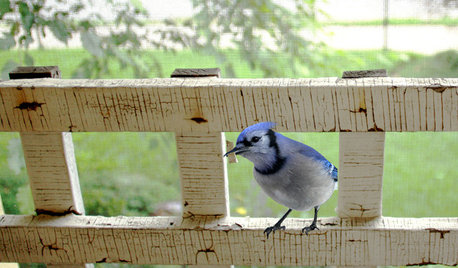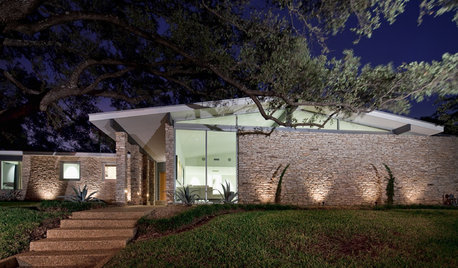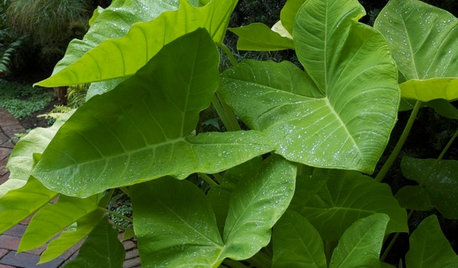Inquisitive Northerner
doniki
17 years ago
Related Stories

GARDENING FOR BIRDSBackyard Birds: Meet Some Clever and Curious Jays
Boisterous jays provide plenty of backyard bird-watching in winter. Here’s how to identify all the varieties and welcome them into your yard
Full Story
ARCHITECTURERoots of Style: Midcentury Modern Design
Midcentury modern still charms with its linear forms and low-sloping roofs. Appreciate it now — such simplicity can be hard to replicate
Full Story
SMALL HOMESHouzz Tour: Sustainable, Comfy Living in 196 Square Feet
Solar panels, ship-inspired features and minimal possessions make this tiny Washington home kind to the earth and cozy for the owners
Full Story
MOST POPULAR9 Reasons to Buy a Painting
No print or poster can rival the power of an original painting, chosen by you, for where you live
Full Story
PETSGood Dog! Cute Pooches at Home
The dogs of Houzz take you on a tour of their homes and show you where they lounge, eat, play, bathe and nap
Full Story
GARDENING GUIDES7 Tropical Wonders of the Plant World
Go for high impact with the spectacular foliage, over-the-top florals or iconic profiles of these hand-picked tropical favorites
Full Story
MIDCENTURY HOMESHouzz Tour: How Can We Get Invited to This Awesome Midcentury Home?
A redwood-clad gem in California’s Marin County features a dreamy outdoor oasis with an open-door policy for the homeowners’ friends
Full Story
BEDROOMSDream Spaces: Bedrooms With Amazing Views
Soaring over the city or nestled amidst nature, these sleeping spaces focus on the most divinely designed feature of all
Full Story





lisa455
greenelbows1
Related Professionals
Maple Valley Landscape Architects & Landscape Designers · Ballwin Landscape Architects & Landscape Designers · Rossville Landscape Architects & Landscape Designers · Taylorsville Landscape Architects & Landscape Designers · Battle Ground Landscape Contractors · Kearny Landscape Contractors · Los Banos Landscape Contractors · Mastic Beach Landscape Contractors · Melrose Landscape Contractors · Milford Landscape Contractors · Ringwood Landscape Contractors · South Lyon Landscape Contractors · Vashon Landscape Contractors · Wallingford Landscape Contractors · Norridge Landscape ContractorsdonikiOriginal Author
alblancher
louisianagal
greenelbows1